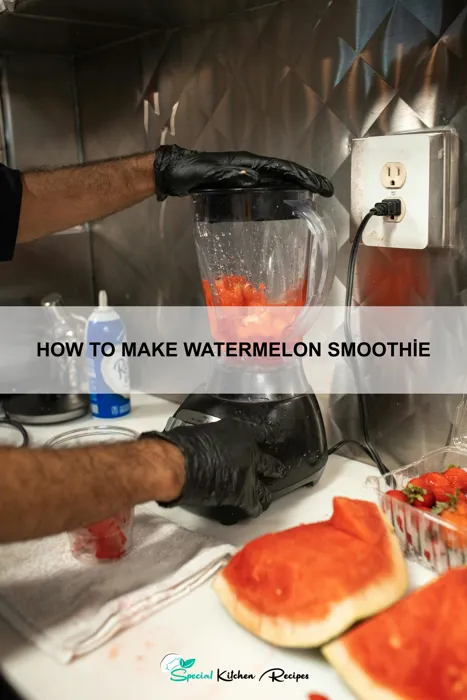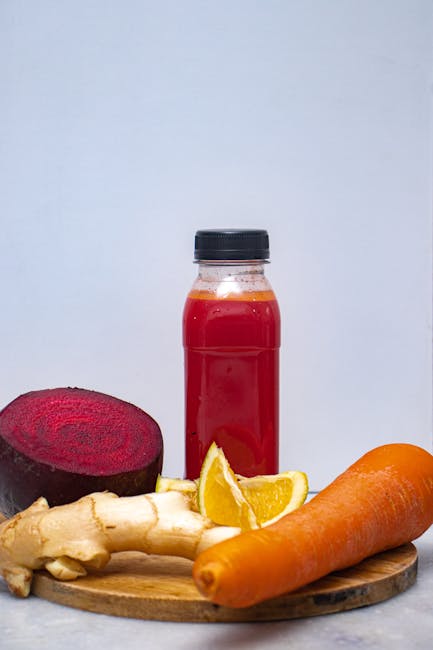The vibrant, refreshing taste of watermelon is synonymous with summer, but the journey of this juicy fruit from ancient origins to modern-day smoothie bowls is a fascinating one. Cultivated in Northeast Africa thousands of years ago, watermelon’s history stretches back to ancient Egypt, where depictions of the fruit appear in artwork dating back to the second millennium BC. Evidence suggests that watermelons were initially grown for their seeds, a valuable source of protein and oil, rather than their sweet flesh. These early varieties were likely smaller and less sweet than the ones we enjoy today, a testament to centuries of selective breeding.
Over time, watermelon cultivation spread across the globe, carried along trade routes and adopted by diverse cultures. In many parts of the world, watermelon holds significant cultural importance. In some African countries, it remains a staple food, featuring prominently in both savory and sweet dishes. Its popularity continues to grow globally; the United States alone produces millions of tons annually, ranking as a major watermelon producer. China, however, leads the world in watermelon production, highlighting the fruit’s widespread appeal. Interestingly, watermelon is more than 90% water, making it an excellent source of hydration, particularly during hot summer months.
Today, watermelon’s versatility extends far beyond simply being eaten as a refreshing snack. Its sweet juice is celebrated in countless recipes – from salads and salsas to jams and jellies. However, the watermelon smoothie has emerged as a particularly popular way to enjoy this summer fruit. The smoothie’s convenience and ability to incorporate other ingredients, such as mint, lime, and other fruits, has contributed to its widespread popularity. This recipe will guide you through creating a delicious and nutritious watermelon smoothie, a perfect blend of history, taste, and modern culinary creativity. With its high water content and essential nutrients, a watermelon smoothie is not only a refreshing treat but also a healthy way to stay hydrated and nourished.
Ingredients and Measurements
Creating the perfect watermelon smoothie hinges on the precise balance of ingredients. The following recipe serves two, but can easily be doubled or halved depending on your needs. Remember that the sweetness of watermelon can vary depending on the ripeness and variety, so taste and adjust accordingly.
Watermelon: This is, of course, the star of the show! We recommend using approximately 4 cups of cubed, seedless watermelon. Choose a ripe watermelon with a deep red color and a sweet aroma for the best flavor. Avoid using watermelon that’s overly watery, as this can dilute the smoothie’s overall taste and texture. If your watermelon isn’t perfectly ripe, a touch of honey or agave nectar can help compensate.
Liquid Base: For this recipe, we’ll be using 1 cup of liquid. You have a few excellent options here. Water is the simplest choice, providing a light and refreshing smoothie. Alternatively, you can use coconut water for a subtle tropical twist and added electrolytes. For a creamier texture, consider using 1/2 cup of plain Greek yogurt or milk (dairy or non-dairy) along with 1/2 cup of water.
Enhancing Flavors and Texture: A squeeze of fresh lime juice (about 1 tablespoon) brightens the sweetness of the watermelon and adds a lovely tartness. Don’t skip this! It truly elevates the smoothie. For extra creaminess, add 1/4 cup of plain yogurt or a frozen banana (sliced before freezing for easier blending). A frozen banana will also help achieve a thicker, colder smoothie, especially beneficial on warmer days.
Optional Boosters: Feel free to experiment with additions! A handful of fresh mint leaves provides a refreshing twist. A small pinch of sea salt balances the sweetness. For a protein boost, add a scoop (around 1.5 tablespoons) of your favorite protein powder. If using protein powder, add it towards the end of blending to prevent clumping.
Sweetener (Optional): As mentioned, the sweetness of the watermelon will dictate whether you need additional sweetener. If your watermelon is less sweet, start with 1-2 tablespoons of honey or agave nectar and adjust to your preference. Always add sweeteners gradually to avoid making the smoothie overly sweet.
Preparation Phase (includes washing and cutting watermelon)
Before you begin crafting your refreshing watermelon smoothie, meticulous preparation is key to achieving the best flavor and texture. This phase focuses on properly washing and cutting your watermelon to ensure a smooth and delicious final product. We’ll be using approximately 4 cups of cubed watermelon for this recipe, but you can adjust this based on your desired smoothie consistency and serving size.
First, thoroughly wash the watermelon under cool, running water. Pay close attention to the rind, scrubbing gently with your hands or a vegetable brush to remove any dirt, pesticides, or debris. Don’t be shy with the water – a clean watermelon is crucial for a safe and tasty smoothie.
Next, prepare your cutting board and knife. Choose a sturdy cutting board that won’t slip, and select a sharp knife for efficient and safe cutting. A serrated knife works particularly well for cutting through the watermelon’s tough rind. Safety first! Always cut away from yourself and keep your fingers clear of the blade.
Now, it’s time to cut the watermelon. Begin by slicing the watermelon in half lengthwise. Then, place one half cut-side down on the cutting board. Carefully slice off the rind, working your way around the entire half. You can do this in large chunks or smaller pieces, depending on your preference. Once the rind is removed, you’ll be left with the juicy red flesh.
Cut the watermelon flesh into cubes approximately 1-inch in size. Consistent sizing helps ensure a smooth blend without large chunks remaining. Smaller cubes will blend more easily and create a smoother texture. Aim for about 4 cups of cubed watermelon. If you have more or less watermelon on hand, adjust accordingly. Remember to remove any seeds that you encounter during the cutting process.
Once you have your 4 cups of cubed watermelon, you can proceed to the next stage of smoothie preparation. Properly cleaning and cutting your watermelon is a vital step that directly impacts the final taste and quality of your smoothie, so take your time and be thorough. A little extra effort in this phase will greatly enhance your overall smoothie experience.
Blending Instructions
Once you’ve prepped your watermelon and other ingredients (as detailed in the previous sections), it’s time to blend! The key to a perfectly smooth and delicious watermelon smoothie lies in the blending process. Follow these instructions carefully for optimal results.
First, ensure your blender is clean and dry. This prevents any unwanted flavors or textures from interfering with your smoothie. If you’re using a high-powered blender, you may be able to add all ingredients at once. However, for less powerful blenders, a phased approach is recommended for better blending efficiency.
Start by adding the liquid base to your blender. For a 2-cup serving, we recommend approximately 1 cup of liquid. This could be water, coconut water, or even a little milk or yogurt for added creaminess. Avoid adding too much liquid at once; it’s easier to add more later than to correct a smoothie that’s too thin.
Next, add your cubed watermelon. For a 2-cup smoothie, use about 4 cups of cubed watermelon (approximately 600g). Ensure the watermelon pieces are relatively small. Large chunks can hinder the blending process and may result in an uneven texture. If your blender has a smaller capacity, add the watermelon in two batches.
If you’re including any other ingredients, such as fresh mint, lime juice, or a touch of honey, add them now. For a 2-cup smoothie, start with 1 tablespoon of honey or other sweetener, adjusting to your preference. A squeeze of lime juice (about ½ a lime) adds a refreshing zing. A few fresh mint leaves will provide a lovely aromatic touch. Add these ingredients gradually, tasting as you go to achieve your desired flavor profile.
Secure the blender lid firmly and begin blending on a low speed. Gradually increase the speed to high, blending until the mixture is completely smooth and creamy. This may take anywhere from 30 seconds to 1 minute, depending on your blender’s power and the consistency of the ingredients. Scrape down the sides of the blender with a spatula halfway through to ensure everything is evenly blended.
Once blended, taste your smoothie and adjust the sweetness or tartness as needed. You can always add more honey or lime juice to achieve your preferred flavor. Pour into a glass and enjoy immediately for the best texture and flavor. If you’re making it ahead of time, store it in an airtight container in the refrigerator, but be aware that the texture may slightly change.
Optional Add-ins (e.g., mint, lime)
While a simple watermelon smoothie is delicious on its own, adding optional ingredients can elevate its flavor profile and nutritional value. Consider these additions to customize your drink to your liking. Remember that adding too many ingredients can overpower the delicate sweetness of the watermelon, so start with small quantities and adjust to taste.
Fresh Herbs: A few sprigs of fresh mint (about 4-6 leaves) or basil (2-3 leaves) can add a refreshing coolness and herbaceous note. Finely chop the herbs before adding them to the blender to ensure even distribution and prevent large pieces from ending up in your smoothie. Over-minting can lead to a bitter taste, so start small and add more as needed.
Citrus Fruits: A squeeze of lime or lemon juice (about 1-2 tablespoons) brightens the sweetness of the watermelon and adds a zesty tang. Lime juice works particularly well, complementing the watermelon’s sweetness without being overpowering. Lemon juice provides a more pronounced tartness, so use it sparingly.
Other Fruits: A small amount of other fruits can enhance the flavor complexity. A half a cup of berries (strawberries, raspberries, or blueberries) adds antioxidants and a vibrant color. A small banana (about 1/4 of a medium banana) contributes creaminess and sweetness, but be mindful of its added sugar content. Avoid adding too many other fruits as they might mask the watermelon flavor.
Spices: A pinch of ginger (about 1/4 teaspoon, finely grated) can add a subtle warmth and a slight zing. A dash of cinnamon (1/8 teaspoon) provides a comforting warmth and complements the sweetness. Use spices cautiously, as they can easily overpower the other flavors.
Sweeteners: If you find your watermelon is not sweet enough, you can add a touch of honey or maple syrup (1-2 teaspoons). Start with a small amount and taste before adding more. Avoid over-sweetening, as the natural sweetness of the watermelon should be the star. Consider using a natural sweetener like agave nectar or date syrup for a less processed option.
Important Note: Always wash and thoroughly clean all fruits and vegetables before using them in your smoothie. Taste your smoothie as you blend and adjust the ingredients according to your preference. Enjoy experimenting with different combinations to find your perfect watermelon smoothie recipe!
Serving Suggestions
Your refreshing watermelon smoothie is ready! But how you serve it can elevate the experience from good to great. Here are some serving suggestions to make the most of your delicious creation:
For the Classic Experience: Simply pour your smoothie into a tall glass. For a 16-ounce smoothie, use a 16-20 ounce glass to leave room at the top. Garnish with a small wedge of fresh watermelon, a sprig of mint, or a few ice cubes for an extra touch of visual appeal and coolness. A reusable straw is a sustainable and stylish choice.
Adding a Boost: Enhance the flavor and nutritional profile of your smoothie with simple additions. A tablespoon of chia seeds adds fiber and omega-3 fatty acids. A squeeze of lime juice (about ½ a lime) provides a zesty contrast to the sweetness. For a creamier texture, stir in a dollop (about 1-2 tablespoons) of Greek yogurt or coconut cream before serving. Avoid adding too many extras at once, as it can overpower the delicate watermelon flavor.
Temperature Control: Serve your smoothie chilled for optimal refreshment. If you prefer a slightly thicker consistency, chill the smoothie for at least 30 minutes before serving. This allows the ingredients to meld and the smoothie to thicken naturally. If you want an icy cold smoothie, add a few ice cubes to the blender before blending or serve it over ice. For a warmer option (perfect for colder days!), try serving it slightly less chilled or even at room temperature.
Presentation Matters: Consider the presentation. Rim the glass with salt or sugar for a sweet and salty contrast. Use a pretty straw and napkin. If serving to guests, consider individual serving sizes in smaller glasses or even cute mason jars. A small label with the smoothie’s name (e.g., Watermelon Refresher ) adds a professional touch.
Pairing Ideas: Watermelon smoothies pair wonderfully with a variety of snacks. Consider serving it alongside a light breakfast such as whole-wheat toast with avocado or a fruit salad. For a light lunch or afternoon snack, it complements a healthy salad or a small sandwich. Avoid pairing it with overly rich or heavy foods, as the smoothie’s lightness might be lost. Remember, the goal is to create a balanced and refreshing experience.
Leftovers: Store leftover smoothie in an airtight container in the refrigerator for up to 2 days. Give it a good stir before serving as the ingredients might separate slightly over time. The texture might change slightly, but the flavor will remain delicious.
Tips and Tricks
Mastering the art of the perfect watermelon smoothie involves more than just blending the fruit. A few key techniques can elevate your drink from good to extraordinary. Let’s explore some tips and tricks to ensure your smoothie is consistently delicious.
Chilling your ingredients is paramount. A cold smoothie is far more refreshing than a lukewarm one. Chill your watermelon for at least 30 minutes before blending. Ideally, cube the watermelon and freeze it for a couple of hours. This will create a thicker, icier smoothie, reducing the need for added ice and potentially diluting the flavor. For a truly frosty treat, consider freezing 1-1.5 cups of cubed watermelon.
Adjusting sweetness is crucial, as watermelon sweetness varies depending on the variety and ripeness. Start with a small amount of sweetener, such as honey or maple syrup (around 1-2 tablespoons), and taste the smoothie before adding more. Don’t add all the sweetener at once; it’s easier to add more than to take it away. If your watermelon is particularly sweet, you may not need any additional sweetener at all. Consider using a natural sweetener like agave nectar or dates for a more complex flavor profile.
Balance your flavors. Watermelon’s sweetness can be beautifully complemented by a hint of acidity. A squeeze of lime or lemon juice (about ½ a lime or ¼ of a lemon) can brighten the flavor and add a refreshing zing. Experiment with other complementary flavors like mint (a few fresh leaves) or a pinch of ginger for a more sophisticated twist. Remember to taste and adjust as you go.
Consider the liquid. The amount of liquid you use will influence the smoothie’s consistency. Start with less liquid (around ½ cup of water or coconut water) and gradually add more until you reach your desired thickness. Using coconut water instead of plain water adds a subtle sweetness and a creamy texture. For a creamier smoothie, consider adding a tablespoon or two of plain yogurt or coconut cream.
Blend in stages. If you’re using a less powerful blender, start by blending the frozen watermelon first to break it down into smaller pieces. Then, add the remaining ingredients and blend until smooth. This prevents overloading your blender and ensures a smoother final product. Avoid over-blending, as this can lead to a warm and less appealing smoothie.
Garnish thoughtfully. A simple garnish can elevate the presentation of your smoothie. A few watermelon wedges, a sprig of mint, or a sprinkle of chia seeds can make it look incredibly appealing. Presentation matters – a visually stunning smoothie is more enjoyable to drink.
Recommendations
For the best tasting watermelon smoothie, we recommend using very ripe, sweet watermelon. Avoid using watermelon that’s overly watery or showing signs of spoilage as this will impact the flavor and texture of your smoothie. Experiment with adding different liquid bases – instead of just water, try coconut water for a tropical twist, or almond milk for a creamier texture. A splash of lime juice can also brighten the flavor profile.
Serving suggestions are plentiful! Enjoy your watermelon smoothie as a refreshing breakfast, a midday pick-me-up, or a light dessert. It’s delicious served chilled, straight from the blender. For a more decadent treat, top with a dollop of plain Greek yogurt or a sprinkle of chia seeds for added texture and nutrition. A few fresh mint leaves add a lovely aromatic touch.
Regarding storage, it’s best to consume your watermelon smoothie immediately for optimal freshness and flavor. However, if you need to store leftovers, transfer them to an airtight container and refrigerate for up to 24 hours. The smoothie may separate slightly upon refrigeration; simply give it a good stir before enjoying.
This smoothie pairs wonderfully with light and healthy meals. It complements dishes like grilled chicken salad, avocado toast, or a fresh fruit platter. Avoid pairing it with very heavy or rich meals, as the smoothie’s lightness might be lost. It’s a great option for a post-workout recovery drink, providing natural sugars and hydration.
Nutritional Information (per serving, approximate): Calories: 150-200 (depending on ingredients and quantities), Carbohydrates: 30-40g, Sugar: 20-30g, Protein: 2-4g, Fat: 1-2g. *Please note that these are estimates and can vary based on the specific ingredients used and their quantities.* This smoothie is a good source of Vitamin C and antioxidants.





